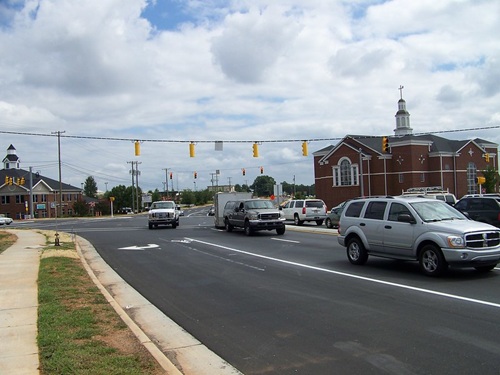The Biden administration recently launched the Freight Logistics Optimization Works or FLOW information system as way to improve freight data sharing within U.S. supply chain networks.
[Above photo by the WSDOT]
In a statement, the White House said FLOW includes 18 initial participants that represent diverse perspectives across the supply chain, including private businesses, trucking, warehousing, and logistics companies, ports, and more.
Those key stakeholders will work together with the administration to develop a “proof-of-concept” information exchange by the end of summer to help ease supply chain congestion, speed up the movement of goods, and ultimately cut costs for American consumers.

The White House added that the U.S. Department of Transportation would lead this effort, playing the role of an “honest broker and convener” to bring supply chain stakeholders together to problem solve and overcome coordination challenges.
The administration said development of the FLOW pilot test is in response to “recent supply chain disruptions,” which have “raised national awareness” of the need for improved freight information exchange. In fact, the American Association of State Highway and Transportation Officials noted a similar need in a 21-page letter sent to USDOT in October 2021 that contained advice on how to improve the nation’s supply chains and transportation industrial base.
“State departments of transportation strive to deliver the most effective and efficient transportation network as they continue to pursue investments that enhance the multimodal freight system,” the organization said. “We are committed to working with USDOT in securing and strengthening America’s supply chains.”

AASHTO also encouraged USDOT in its letter to review existing State Freight Plans, which provide “comprehensive plans” for identifying multimodal challenges, policies, programs, investment strategies and data needed to provide efficient, reliable, and safe freight transportation for that state and region.
The organization also encouraged USDOT to review the National Freight Strategic Plan – unveiled in September 2020 – that guides national freight policy and investment and provides a framework for better national multimodal coordination.
To that end, the White House said its FLOW concept seeks to support businesses throughout the supply chain and improve accuracy of information from end-to-end for a more resilient supply chain.
“The lack of digital infrastructure and transparency makes our supply chains brittle and unable to adapt when faced with a shock,” the White House said. “The goods movement chain is almost entirely privately operated and spans shipping lines, ports, terminal operators, truckers, railroads, warehouses, and cargo owners such as retailers.”

The administration added that those “different actors” have “made great strides in digitizing their own internal operations, but they do not always exchange information with each other. This lack of information exchange can cause delays as cargo moves from one part of the supply chain to another, driving up costs and increasing goods movement fragility.”
Research nonprofit TRIP made similar points in a December 2021 report on the U.S. freight transport system, noting it needed more “reliability” for states to make additional investments to improve the efficiency and condition of the country’s freight network to minimize supply chain disruptions.
That report – dubbed The U.S. Freight Network’s Critical Role in the Supply Chain – examined the latest information on the condition and reliability of supply chains, as well as the critical role the U.S. freight transportation network plays in keeping the U.S. economy moving.
“In the short term, improving the performance of the nation’s supply chain will require addressing the many supply chain challenges that are restricting the timely movement of freight,” said Dave Kearby, TRIP’s executive director, in a statement at the time.
“But ensuring that the nation’s long-term goals for economic growth and quality of life are met will require investing adequately in an efficient transportation system that will provide the U.S. with a reliable supply chain,” he said.
 Top Stories
Top Stories


